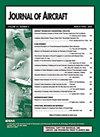第四届高升力预测研讨会RANS/LES混合技术焦点小组总结
IF 2.1
3区 工程技术
Q2 ENGINEERING, AEROSPACE
引用次数: 0
摘要
本文总结了为2022年1月7日在加利福尼亚州圣地亚哥举行的第四届AIAA CFD高升力预测研讨会(HLPW-4)的混合RANS/LES技术焦点小组做出贡献的多个团队的集体努力。总体结论是,相对于潜在的RANS模型,诸如混合RANS/LES(HRLES)之类的湍流解决方法确实为这些高升力几何形状提供了改进的预测,但也存在细微差别,一些尚未解决的问题仍然是未来工作的重点。特别是,虽然HRLES方法似乎在更高的攻角下显示出明显改进的预测,但HRLES法在较低的攻角下有返回稍差力矩预测的趋势,这表明与襟翼浅分离的预测可能需要进一步研究。计算成本仍然是一个重大问题,HRLES方法需要的高性能计算中央处理器核心小时大约是稳态RANS方法的九倍,这表明未来的算法和计算优化可能是有益的。最后,有强有力的迹象表明,风洞建模对与实验测量的相关性有积极影响,这表明未来的工作可能会更好地集中在风洞模拟上。本文章由计算机程序翻译,如有差异,请以英文原文为准。
Summary of the 4th High-Lift Prediction Workshop Hybrid RANS/LES Technology Focus Group
This paper summarizes the collective efforts of multiple teams that contributed to the hybrid RANS/LES technical focus group for the 4th AIAA CFD High Lift Prediction Workshop (HLPW-4), which took place on January 7, 2022, in San Diego, California. The overall conclusion is that turbulence-resolving methods such as hybrid RANS/LES (HRLES) do offer improved predictions for these high-lift geometries, with respect to the underlying RANS models, but there are nuances, and some unresolved issues remain that should be the focus of future work. In particular, while HRLES methods appear to show clearly improved predictions at higher angles of attack, there is some tendency for HRLES methods to return slightly worse moment predictions at lower angles of attack, suggesting that prediction of the shallow separation from the flaps might need further research. Computing cost also remains a significant issue, with HRLES methods requiring roughly nine times more high-performance computing central processing unit core hours than steady-state RANS methods, indicating that future algorithmic and computational optimization could be beneficial. Finally, there are strong indications that modeling the wind tunnel has a positive impact on correlation with experimental measurements, suggesting that future work might be better focused on in-tunnel simulations.
求助全文
通过发布文献求助,成功后即可免费获取论文全文。
去求助
来源期刊

Journal of Aircraft
工程技术-工程:宇航
CiteScore
4.50
自引率
31.80%
发文量
141
审稿时长
6 months
期刊介绍:
This Journal is devoted to the advancement of the applied science and technology of airborne flight through the dissemination of original archival papers describing significant advances in aircraft, the operation of aircraft, and applications of aircraft technology to other fields. The Journal publishes qualified papers on aircraft systems, air transportation, air traffic management, and multidisciplinary design optimization of aircraft, flight mechanics, flight and ground testing, applied computational fluid dynamics, flight safety, weather and noise hazards, human factors, airport design, airline operations, application of computers to aircraft including artificial intelligence/expert systems, production methods, engineering economic analyses, affordability, reliability, maintainability, and logistics support, integration of propulsion and control systems into aircraft design and operations, aircraft aerodynamics (including unsteady aerodynamics), structural design/dynamics , aeroelasticity, and aeroacoustics. It publishes papers on general aviation, military and civilian aircraft, UAV, STOL and V/STOL, subsonic, supersonic, transonic, and hypersonic aircraft. Papers are sought which comprehensively survey results of recent technical work with emphasis on aircraft technology application.
 求助内容:
求助内容: 应助结果提醒方式:
应助结果提醒方式:


